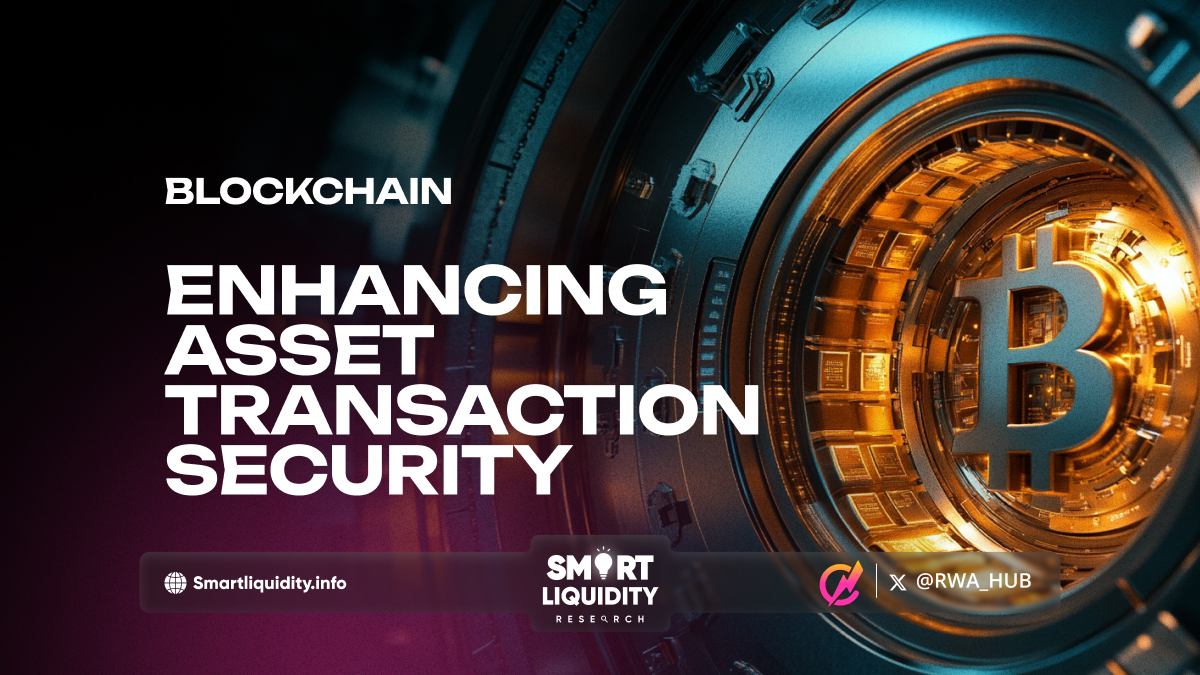Blockchain: Enhancing Asset Transaction Security


Blockchain: Enhancing Asset Transaction Security by providing transparency, immutability, and fraud prevention in real-world asset transactions through decentralized ledger technology.
Enhancing Asset Transaction Security is crucial in modern finance, and blockchain technology ensures transparency, immutability, and fraud prevention in digital transactions. Moreover, blockchain technology is revolutionizing real-world asset transactions by enhancing transparency and security. By leveraging an immutable ledger, blockchain ensures all parties access the same information, reducing discrepancies and building trust. Furthermore, this shared ledger system minimizes the need for intermediaries, streamlining processes and reducing costs. As a result, industries are increasingly adopting blockchain to improve transaction integrity and efficiency.
Enhanced Transparency in Asset Transactions
Blockchain’s decentralized ledger provides a transparent record of all transactions, allowing participants to verify and audit asset transfers easily. Each transaction is time-stamped and linked to previous ones, creating an unalterable chain of information. This transparency reduces the risk of fraud and errors, as every transaction is visible to authorized participants. For example, in supply chain management, blockchain enables tracking of products from their origin to the consumer, ensuring authenticity and reducing counterfeiting. Similarly, in real estate, property titles can be tokenized on the blockchain, providing a clear and indisputable ownership history. These applications demonstrate how blockchain’s transparency can enhance trust and efficiency in asset transactions.
Improved Security Through Immutability
Blockchain’s security features stem from its immutable nature; once a transaction is recorded, it cannot be altered or deleted. This immutability ensures that the transaction history remains accurate and tamper-proof. Additionally, blockchain employs cryptographic techniques to secure data, making it resistant to hacking and unauthorized access. In financial services, this level of security is crucial for preventing fraud and ensuring the integrity of transactions. For instance, tokenizing assets such as stocks or bonds on a blockchain allows for secure and efficient trading, with each token representing a real-world asset backed by the corresponding value. This method not only enhances security but also increases the liquidity of assets, as they can be traded seamlessly on digital platforms.
Challenges and Future Outlook
Despite its advantages, integrating blockchain into real-world asset transactions presents challenges, including regulatory hurdles, technological complexities, and the need for widespread adoption. Regulatory frameworks are still evolving to accommodate blockchain-based transactions, and there is a need for clear guidelines to ensure compliance and protect participants. Technologically, ensuring interoperability between different blockchain platforms and existing systems is essential for seamless integration. Moreover, achieving widespread adoption requires collaboration among industry stakeholders to establish standards and promote the benefits of blockchain technology. As these challenges are addressed, blockchain is poised to become a foundational technology in asset transactions, offering enhanced transparency and security across various industries.
Conclusion
In conclusion, blockchain technology offers significant improvements in transparency and security for real-world asset transactions. Its immutable and transparent ledger system reduces the need for intermediaries, lowers costs, and builds trust among participants. While challenges remain in terms of regulation, technology, and adoption, ongoing developments indicate a promising future for blockchain in transforming asset transactions. As industries continue to explore and implement blockchain solutions, we can expect more secure, efficient, and transparent processes in the management and transfer of real-world assets.
DISCLAIMER:
“The information provided on this platform is for general informational purposes only. All information on the platform is provided in good faith; however, we make no representation or warranty of any kind, express or implied, regarding the accuracy, adequacy, validity, reliability, availability, or completeness of any information on the platform.”




